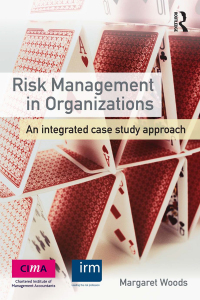Answered step by step
Verified Expert Solution
Question
1 Approved Answer
Heavenly Displays Inc. puts together large-scale fireworks displays-primarily for Canada Day celebrations sponsored by corporations and municipalities. The company assembles and orchestrates complex displays using







Heavenly Displays Inc. puts together large-scale fireworks displays-primarily for Canada Day celebrations sponsored by corporations and municipalities. The company assembles and orchestrates complex displays using pyrotechnic components purchased from suppliers throughout the world. The company has built a reputation for safety and for the awesome power and brilliance of its computer-controlled shows. Heavenly Displays builds its own launch platforms and its own electronic controls. Because of the company's reputation, customers order shows up to a year in advance. Since each show is different in terms of duration and components used, Heavenly Displays uses a job-order costing system. Heavenly Displays trial balance as of January 1, the beginning of the current year, is given below. $ 9,000 30,000 16.000 21,000 Cash Accounts Receivable Raw Materials Work in Process Finished Goods Prepaid Insurance Buildings and quipment Accumulated Depreciation Accounts Payable Salaries and ages Payable Capital Stock Retained Earnings Total 190,000 $128.000 60,000 3.000 200,000 30.000 $421,000 $421,000 The company charges manufacturing overhead costs to jobs on the basis of direct labour-hours (Each customer order for a complete fireworks display is a separate job.) Management estimated that the company would incur $135,000 in manufacturing overhead costs in the fabrication and electronics shops and would work 18,000 direct labour-hours during the year. The following transactions occurred during the year a. Raw materials consisting mostly of skyrockets, mortar bombs, flares, wiring, and electronic components, were purchased on account: $820,000 D. Raw materials were issued to production: 5830,000 (513,000 of this amount was for indirect materials, and the remainder was for direct materials) C. Fabrication and electronics shop payrolls were accrued: S200.000 (70% direct labour and 30% indirect labour). A total of 20,800 direct labour-hours were worked during the year d. Seling and administrative salaries were accrued: $150,000. e. The company prepaid additional insurance premiums of $38,000 during the year. Prepaid insurance expiring during the year was $40,000 (only $600 relates to selling and administrative; the other $39.400 relates to the fabrication and electronics shops because of the safety hazards involved in handling fireworks). E Marketing cost was incurred: $100,000 9. Depreciation charges for the year totalled $40.000 (70% relates to fabrication and electronics shop assets, and 30% relates to selling and administrative assets). h. Property taxes were accrued on the shop buildings: 512,600 (credit Accounts Payable). Manufacturing overhead cost was applied to jobs Jobs completed during the year had a total production cost of S1,106,000 according to their job cost sheets. k Revenue (all on account) was $1.420.000. Cost of Goods Sold (before any adjustment for underapplied or overapplied overhead) was $120,000 I Cash collections on account from customers totalled $1.415.000. m. Cash payments on accounts payable totalled $970.000 Cash payments to employees for salaries and wages totalled $348,000. Required: 1. Prepare journal entries for the year's transactions. (Do not round intermediate calculations. If no entry is required for a transaction/event, select "No journal entry required" in the first account field.) View transaction list Journal entry worksheet Raw materials, consisting mostly of skyrockets, mortar bombs, flares, wiring, and electronic components, were purchased on account: $820,000. Note: Enter debits before credits. Transaction General Journal Debit Credit Record entry Clear entry View general journal Manufacturing Overhead Salaries and Wages Payable Beg Bal Beg Bal End. Bal End. Bal Accounts Payable Retained Earnings Beg Bal Beg Bal End. Bal End. Bal Capital Stock Marketing Expense Beg Bal End Bal Beg Bal End. Bal Depreciation Expense Insurance Expense Beg Bal Beg Bal End, Bal End. Bal Salaries Expense Cost of Goods Sold Beg Bal Beg Bal End. Bal End Bal Sales Beg Bal End Bar 3-4. Is manufacturing overhead underapplied or overapplied for the year? O Overapplied overhead Underapplied overhead 3-b. Prepare the necessary Journal entry to dispose of the balance in the Manufacturing Overhead account. (Round your intermediate calculations to the nearest whole percentage value. If no entry is required for a transaction/event, select "No journal entry required" in the first account field.) 4. Prepare an income statement for the year. (Do not prepare a statement of cost of goods manufactured; all of the information needed for the income statement is available in the T-accounts.) HEAVENLY DISPLAYS, INC. Income Statement For the Year Ended December 31 Selling and administrative expenses
Step by Step Solution
There are 3 Steps involved in it
Step: 1

Get Instant Access to Expert-Tailored Solutions
See step-by-step solutions with expert insights and AI powered tools for academic success
Step: 2

Step: 3

Ace Your Homework with AI
Get the answers you need in no time with our AI-driven, step-by-step assistance
Get Started


